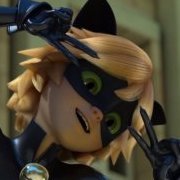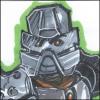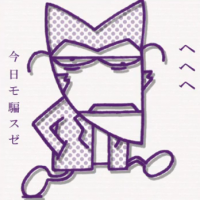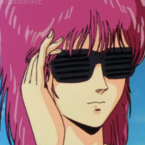Leaderboard
Popular Content
Showing content with the highest reputation on 06/14/2014 in all areas
-
One of the perks of working at a place that has a wood shop. And lots of spare plywood.2 points
-
What do you know: looks like I’m still on a Matoran Language streak these days, despite another interstate relocation (back to my natural habitat in the dry-bare-sandy southwest US...it’s good to be home). This time though, I’m taking a break from those pretentious Lessons in order to play around with a tangent on nameless Kanohi masks, i.e. official (and some unofficial) Kanohi masks that never received official (or unofficial) Matoran names. With a universe as sprawling as that of Bionicle, you can be sure that there are quite a few. Here are some musings on what some of those masks might have been called if they had only been important enough: ---------- Kanohi Vaamaku, n.cmpd. “Mask of Psychometry; allows the wearer to see the history of an object/place through physical contact” [variant vāmaku] Etymology: vā, stm. “time (absract)” -amu, p. “through, during (transitional-instrumental particle)” aku, n. “sight” The element vā-amu translates straightforwardly to “through/across time”, with the application of the transitional-instrumental particle (see Lesson 8, section IIf.). This is combined with aku “sight” to yield the historical compound vā-amu-aku “through/across-time sight”, modern form vaamaku. ---------- Kanohi Amana, n.cmpd. “Mask of Healing; allows the wearer to heal visible/known physical injuries” [variant form mana] Etymology: amana, n. “(re)forming, (re)making; healing” The element amana is of uncertain etymology. It is almost certainly related to (or even directly derived from) the ancient stem ma(t), denoting “control, mastery, use, etc.”, with a variant meaning of “form, shape, create”. See dictionary entries <mat> and <manta>. One possible solution involves an etymology patterned after the name Mata (lit. All-Master: cf. Mata Nui “the Great Spirit”), which derives from the ancient stem mat combined with a (generally intensive) particle ā. Application of such a particle to a hypothetical stem ?man could yield a form ?man-ā, with displacement of the particle (“variable placement”*) resulting in a further form a-man-a, dividing the particle ā (literally aa) into two units: a and a. This would be in accord with the variant form mana (see variant form above) and with the attested dialectal variants of the Mata-name, namely Amata, as well as with the obscure title Amana Nui, which, in Matoran cosmology, may in fact be a further pseudonym for Mata Nui himself, with a meaning roughly analogous to “Great Healer”, “Great (Re)Former”, or (post-Bara Magna) “Great Melder”. ---------- Kanohi Onweku, n.cmpd. “Mask of Intangibility; allows the wearer to become intangible (non-solid)” Etymology: onwe, adj. “solid, stable” -ku, p. “non-, un- (negative particle)” The element onwe derives from the metaphoric meaning of the elemental stem onu “earth”, with application of the (relatively rare) adjectival particle -ee (onu-ee > onwe). This is combined with the general negative particle ku, yielding the compound onwe-ku “non-solid; intangible”. ---------- Kanohi Isima, n.cmpd. “Mask of Possibilities; allows the wearer to subtly alter fields of probability” Etymology: isi, n. “possibility” ma(t), stm. “mastery, control” The element isi combines straightforwardly with the element ma(t), yielding the compound isi-ma(t) “control of possibility”, modern form isima. ---------- Kanohi Awai, n.cmpd. “Mask of Growth; allows the wearer to increase in physical size” [variant forms waia, waya, waaya] Etymology: wā, stm. “great, large, broad; large size” ya p. “verbal particle” The original stem wā denotes “great, large, broad; large size”. This stem is verbalized by the addition of the verbal particle ya, yielding a compound wā-ya roughly with the meaning of “become large”. The particle ya exhibits “variable placement”*. It can be “split” into two separate units i and a, with the latter unit being displaced before the stem to which the particle is applied. In this case, this yields the form a-wā-i, modern form awai. This basic verbalization of a stem with displacement of the verbal particle is frequently used to denote a generalized (nounal) event, equivalent to a gerund (or possibly infinitive) in English: “becoming large, increasing, growing”. Variants of this mask-name do appear without the displaced particle (see variant forms above), but they are dialectically very restricted. ----------- Kanohi Mautru, n.cmpd. “Mask of Mutation; allows the wearer to mutate organisms” Etymology: mautru, n. “change, mutation” The original stem maut denotes “change, differentiation”. Application of the (relatively rare) nounal particle -rū, denoting an object or place embodying a concept, yields the compound maut-rū, modern form mautru. ---------- Kanohi Mutuku, n.cmpd. “Mask of Emulation; allows the wearer to analyze and replicate the powers of other beings temporarily” Etymology: mutu, adj. “different, unlike” -ku, p. “non-, un- (negative particle)” The element mutu derives from the older stem maut “change, differentiation”, with application of the adjectival particle -u (maut-u > mut-u). This is combined with the general negative particle ku, yielding the compound maut-u-ku “not-different, not-unlike”, modern form mutuku. ---------- Kanohi Mautatu, n.cmpd. “Mask of Charisma; allows the wearer to convince others to agree with the wearer’s perspective/will by subtly altering their perception of the world” Etymology: maut, stm. “change, differentiation” atu, n. “mind, will” The original stem maut denotes “change, differentiation”. In combination with atu, this yields the compound maut-atu “lit. change-mind/will; changing/altering the mind or will”. ---------- Kanohi Eyi, n.cmpd. “Mask of Fusion; allows the wearer to forcibly fuse with one or more beings to form a single, larger being” Etymology: e-, p. “make/cause X (causative particle)” yi, adj/adv. “together” The adjectival element yi is combined with the causative (verbal) particle e-, yielding a semi-verbal compound e-yi “make together; cause-to-be-together”. ---------- Kanohi Konomau, n.cmpd. “Mask of Biomechanics; allows the wearer to interface with and assume mental control over (bio)mechanical systems” [variant form konomatu, konoimau, konoimatu; noimatuko, noimauko] Etymology: uko, p. “outside, external (locative particle)” noi, n. “(physical protodermic) body” ma(t), stm. “control, mastery” The elements noi and ma(t) combine to form the compound noi-ma(t) “body-control”. The element noi is used in reference to the (bio)mechanical nature of the Matoran body. The particle uko exhibits “variable placement” (see Lesson 7 IIId., Lesson 8 Ia.). It can be “split” into two separate units u and ko, with the latter unit being displaced before the stem to which the particle is applied. In this case, the particle uko is applied to the compound noi-ma(t), yielding the form ko-noi-ma(t)-u “external body-control; body-control from outside“, modern forms konomau (-noi- > -no-) and konomatu. Variants of this mask-name also exist using the unsplit form of the particle (see variant forms above). ---------- [Note: the following masks are not officially confirmed Kanohi powers, but they are powers that (I think) could be exhibited by Kanohi (e.g. Makuta/Rahkshi powers)] Kanohi Koramau, n.cmpd. “Mask of Rahi Control; allows the wearer to exert control over various species of Rahi” [variant forms korahimau, korahimatu; rahimat-uko, rahima-uko] Etymology: uko, p. “outside, external (locative particle)” rahi, n. “Rahi, animals, fauna (general term)” ma(t), stm. “control, mastery” The elements rahi and ma(t) combine to form the compound rahi-ma(t) “rahi-control”. The particle uko exhibits “variable placement”*. It can be “split” into two separate units u and ko, with the latter unit being displaced before the stem to which the particle is applied. In this case, the particle uko is applied to the compound rahi-ma(t), yielding the form ko-rahi-ma(t)-u “external rahi-control; rahi-control from outside“, modern forms koramau (-rahi- > -ra-) and koramatu. Several variants of this mask-name did exist early on using the unsplit form of the particle (see variant forms above) but these were dialectically very restricted. ---------- Kanohi Kokrimau, n.cmpd. “Mask of Insect Control; allows the wearer to exert control over various species of Insect Rahi” [variant forms kokirimau, kokirimatu; kirimat-uko, kirima-uko] Etymology: uko, p. “outside, external (locative particle)” kiri, n. “insects (general term)” ma(t), stm. “control, mastery” The elements kiri and ma(t) combine to form the compound kiri-ma(t) “insect-control”. The particle uko exhibits “variable placement” (see Lesson 7 IIId., Lesson 8 Ia.). It can be “split” into two separate units u and ko, with the latter unit being displaced before the stem to which the particle is applied. In this case, the particle uko is applied to the compound kiri-ma(t), yielding the form ko-kiri-ma(t)-u “external insect-control; insect-control from outside“, modern forms kokrimau (-kiri- > -kri-) and kokrimatu. Several variants of this mask-name did exist early on using the unsplit form of the particle (see variant forms above) but these were dialectically very restricted. ---------- Kanohi Akataiku, “Mask of Heat Vision; allows the wearer to project beams of heat along the wearer’s line of sight” [variant forms akataku, akatāku, akataiaku] Etymology: aka, n. “power, ability” [independent augmented form of ka, see dictionary entries <aka>, <ka>] taiaku, n.cmpd. “heat-vision” [from ancient compound tae-aku; also tāku] The element aka combines straightforwardly with the element taiaku, yielding the compound aka-taiaku “power of heat-vision”, modern form akataiku (also see variants above). ---------- [Note: the following masks are not actually nameless. They have official names, but no official etymologies. Here are unofficial etymologies for them.] Kanohi Komau, n.cmpd. “Mask of Mind Control; allows the wearer to exert mental control over a target” [variant forms komatu, matuko, mauko] Etymology: uko, p. “outside, external (locative particle)” ma(t), stm. “control, mastery” The particle uko exhibits “variable placement”*. It can be “split” into two separate units u and ko, with the latter unit being displaced before the stem to which the particle is applied. In this case, the particle uko is applied to the stem ma(t), yielding the form ko-ma(t)-u “external control; control from outside“, modern forms komau (more frequent) and komatu. Variants of this mask-name did exist early on using the unsplit form of the particle--mat-uko and ma-uko—but these were dialectically very restricted. ---------- Kanohi Suletu, n.cmpd. “Mask of Telepathy; allows the wearer to communicate with others telepathically, along with a range of other telepathic abilities” [variant form selatu] Etymology: seu(l), stm. “elemental Psionics” (modified form of elemental prefix se-, ce-) atu, n. “mind, will” The element seu(l) is an elaboration of the elemental Psionics prefix se- (also spelled ce-) modified along a similar pattern as, e.g. ga > (a)gal- (see dictionary entries <gah>, <ehel>, <galnu>). This is combined with atu (from older *aetu) to yield a compound seul-aetu “psionic will; mental will”, modern forms suletu (more frequent), selatu. ---------- Kanohi Mahiki, n.cmpd. “Mask of Illusion; allows the wearer to create and manipulate visual illusions” Etymology: ma(t), stm. “control, mastery” hiki, n. “deception, trickery” The ancient stem ma(t) combines with the element hiki to form the compound ma-hiki “control of deception/trickery”. The etymology of hiki is somewhat interesting to note. The concept of deception or trickery in the emergent Matoran culture appears to have been associated with “incompleteness”, “part of a whole”, or “something held back”. The composition of hiki reflects this association: the element ki denotes “(a) part, piece”, while hī denotes “(a) thing, place”, with the original meaning of hiki being “part of a thing”. ---------- Kanohi Akaku, n.cmpd. “Mask of (X-Ray) Vision; allows the wearer to see with enhanced vision, even through solid matter” Etymology: aka, n. “power, ability” [independent augmented form of ka, see dictionary entries <aka>, <ka>] aku, n. “sight, vision” The element aka combines straightforwardly with the element aku, yielding the compound aka-aku “power of vision”, modern form akaku. ---------- Kanohi Kakama, n.cmpd. “Mask of Speed; allows the wearer to move at extremely high speeds” [variant form kamaka] Etymology: ka, n. “power, energy” ka-ma, v. “to move” The element ka combines with the verbal complex ka-ma to form the compound ka-kama “power of moving/movement”. In order to express the generalized (nounal) event of “moving, movement” intended here, the verbal particle is also sometimes displaced (“variable placement”*), yielding the variant verbal complex ma-ka (and the variant form kamaka, see variant form above). ---------- Kanohi Vahi, n.cmpd. “Mask of Time; allows the wearer to control the flow of time itself” vā, stm. “time (abstract)” hī, stm. “thing, place” The elements vā and hī combine straightforwardly to yield the compound vā-hī, literally meaning “time-thing”, modern form vahi. [*see Lesson 6 I., Lesson 7 IIId., Lesson 8 Ia. for more information on “splitting” particles and “variable placement”]1 point
-
We left the hotel at 11:14 after amusing the valet staff with our rudimentary French, heading for Stade Municipal, looking forward to what we were sure would be a strange pennant collection from the stadium of the independent-league Québec Capitales. After circling around the hotel and working through downtown Québec, we pulled into the parking lot. Armed with a cheat-sheet for the sentences we'd need in order to purchase a pennant exclusively in French, we headed in. Fortunately for us, the lady at the front desk knew a little more English than we know of French, and so we were able to purchase a pennant and hat. We left the stadium around noon and exited the city as we'd entered it, then headed southwest across the St. Lawrence Seaway and headed out more into the countryside. The rain was constant, and got worse the longer we stayed in Québec. The Québécois drivers never had their rear lights on, passed at incredible speeds on wet pavement, and generally just drove like crazy people. Around 1:00 we got drinks, snacks, and gas at a service station, using up the last of our Canadian cash. We were well into Québec farmland at this point, and we got even further into it as we meandered our way southeast along provincial routes, including the infernally infested paved drainage ditch that was QC-235, a busy two-lane road through the middle of nowhere where more than one Québec driver passed farm equipment on blind hills. The rain increased. Standing water was visible in the fields next to us, and every truck that was going north left behind a great plume of mist. We still got across Québec, and the rains eventually abated as we passed through the small communities of Bedford and Pike River. The strangest thing about the region of southern Québec we traversed was the random two mountains that rose up out of the flat farmland, visible for miles around even through the mist. It took fifteen minutes to get across the border. We accessed the trip odometer when we were stopped, switching away from the Metric system and writing down our current mileage: 3590 miles, or 5777.7 kilometers. We then entered Vermont, completing my personal collection of the contiguous 48 states. The sun broke through the clouds and we could catch more glimpses of Lake Champlain. The rain turned to mist and finally stopped altogether as we reached the town of St. Albans, which has an interesting bit of history behind it - a raid on the town in 1864 by Confederates who came down from Montreal to rob banks and send supplies back south. Despite meticulous planning, their raid wasn't as much of a success as they'd originally thought, and the men who carried it out were eventually acquitted under the logic that the raid was an act of war. There's not much now when it comes to the raid, but we still stopped in St. Albans. The adorable downtown was scouted for historical markers and food, and we found both - right across the street from each other. We ate at a little Italian restaurant called Mimmo's, where the service was slowed due to a change in shift and some sort of refrigerator problem in the kitchen, but was delicious. We later found out that they'd won some local awards for excellence, and we could see why - my baked ziti was excellent, and I got similar reports about the pizza and meatball spaghetti. Afterwards, we walked around across the street, where we saw the second Sherman tank in two days as well as a series of monuments dedicated to veterans of conflicts scattered around a picturesque little park. At 5:00 we got back on the Interstate and at 5:20 we got to our hotel, where, once we settled down, loads of laundry were put into the washer. Around 6:30 we left for the stadium of the Vermont Lake Monsters, a single-A team who shares their historic ballpark with the University of Vermont. We went down the road five minutes to the stadium. Their season won't start until next Monday, but three or four guys were there, preparing for Opening Day. A fellow let us in to purchase a pennant and hat, as well as point out some bits of their quaint little ballpark. We then drove out of there, saw the grave of Ethan Allen, then continued into downtown Winooski, where we parked and walked around towards the Winooski River, where, to our surprise, a boardwalk overlooked the rapids below. We followed this boardwalk up the river, where it petered out into a dirt trail paralleling the river, narrowing considerably the farther we got. We saw interesting plant life and about a dozen slugs on a downed tree - all of them burnt orange, very small, and squiggling around. The trail continued on, but we turned back - there was nothing else to see under the bridge, and deep in the woods we wanted to have plenty of light to get out, which we did. We walked around a few blocks of Winooski and then headed back to the hotel, which is full of screaming kids. Thankfully it has died down, but it was a full-on racket there for a while. Tomorrow: continuing southbound to Fort Ticonderoga and Saratoga Springs.1 point
-
If National Anthem singing were relegated strictly to the people who could actually sing it, there would only be about two dozen people in the US that would ever sing it. I give props to the folks who know the lyrics and at least try, even if their renditions are totally horrible. Also, I've always been under the impression that the second verse makes for a much better National Anthem, as it's about the flag being seen as the sun rises instead of ending with a question. Overall I just sort of like the second verse better as a piece of poetry as well.1 point
-
Because every time I see you I am reminded that I will never be the person who built Fanglyfuss.1 point
-
1 point
-
1 point
-
Yeah. Because that's something rational people say and think when they hear about toy theft. -Tyler1 point
-
When ya see a topic in LGD about the LEGO Drome Racing game, and don't see your name mentioned anywhere on the first page... it's a good sign you're waaaay out of it, lol. Many of you newer members probably don't even realize who I am when it comes to the drome. So today I thought I'd take a little zoom down memory highway... When the drome first came out, I logged on, because I love racing games, almost as much as battle games, so I thought, eh, why not? Might be fun. I was a little surprised at first that it wasn't a steering game--you don't actually get to drive the car down a track, you set up the race strategy beforehand and let the computer simulate the race. The music was what hooked me, I think. I loved that music. I had to pick a team of course, and H.O.T.--High Octane Team--stood out the most to me. So an H.O.T.er I became, and I was glad of it. My experience showed that it was indeed the best team, for the longest running time. Keep in mind that at this time, all that we had was a Jungle Track and a perpetual "Coming Soon" list of other tracks. And level D--nothing higher. But that fitted me too--I liked the Jungle track, and the car I had--a Scorcher--did what I needed it to do. I needed a name, of course, and couldn't think of one, so I looked at the avatars available. The Skeleton stood out most to me. So I became "bones." But that was taken--and I refuse to string some random "54721495" number at the end of a name. So I decided to go with Roman Numerals for 3... but even that would not quite do. It needed to be distinctive, and I knew immediately how it would be. It would always be lowercase. bonesiii. Not Bones The Third, but "bones triple 'i'". So I raced a few races, figured out some winning strategies, and found I was quite adept at it. Those strategies, which are still classified (), turned out to even more winning than I thought. I went in to check the high scores one time... and lo and behold. I was first place. Of everybody. What shocked me most was that I was the only one who seemed to have thought of my strategies. Now to be fair, it -was- a new game. I'd always wondered how people get to the top of such high-scores lists, and short of just plain insanity, I think most get there because they got a big head start. That was true in my case--but now how could I hold the lead? Well, that's classified. But hold it I did, for a long time. The game grew up, and many competent racers tried to pass me but failed. Somehow I managed to become the Drome's very first major, long-term champion. I held the lead for at least half a year, maybe more, though now my memory of it grows dim. Eventually a maverick passed me, but even after I was reduced to second place, H.O.T. still dominated the Jungle Track, and overall was ahead of every other team. With most, they were ahead by a lot. I don't know what it was, and I'd like to hope that my big forefront lead helped H.O.T. stay ahead so long. But I strongly suspect the main driving force was the everyday team member, working hard behind the scenes to push those numbers up like one of Lord Survurlode's floods. That Maverick soon passed me by thousands. So far ahead I could never catch up and also have a life--it was just a fun game after all, and by that time I was beginning to get involved here. And yet... Maverick did not pass H.O.T. That I could not have done alone. Not possible. Now of course, the drome is different. My old account didn't work (I actually had had to get a second one before due to a glitch, becoming "bonesiii_v2"--that one now is abandoned as well). I have a new screenname for the new Drome, and I did race some races for sheer nostalgia, but to be honest since then I've forgotten the password. It was fun for a time but now I've moved on "to bigger and better things" as it were (BZP! ). I have now officially retired. So there it is in a nutshell. Y'all might know me now as the storyline geek for Bionicle, but my original claim to fame was as a Drome Champion. To this day I keep the basic idea of a skull insignia as my avatar here, and obviously the name has stuck, although nowadays I give in a little and capitalize it sometimes. But the Drome wasn't special to me just because I was a champion. Frankly, I don't even care about that. What impressed me was the teamwork that I saw evidence of, even though nobody really knew each other and there was no method of communication (other than BZP and other such outside places, and I did have the honor of meeting many fellow dromers). When you think about, all online communities and indeed just about everything else works for the same reason. It isn't the "champions" that make something great. It's the whole team. And my tactics are still classified.1 point
This leaderboard is set to New York/GMT-04:00








